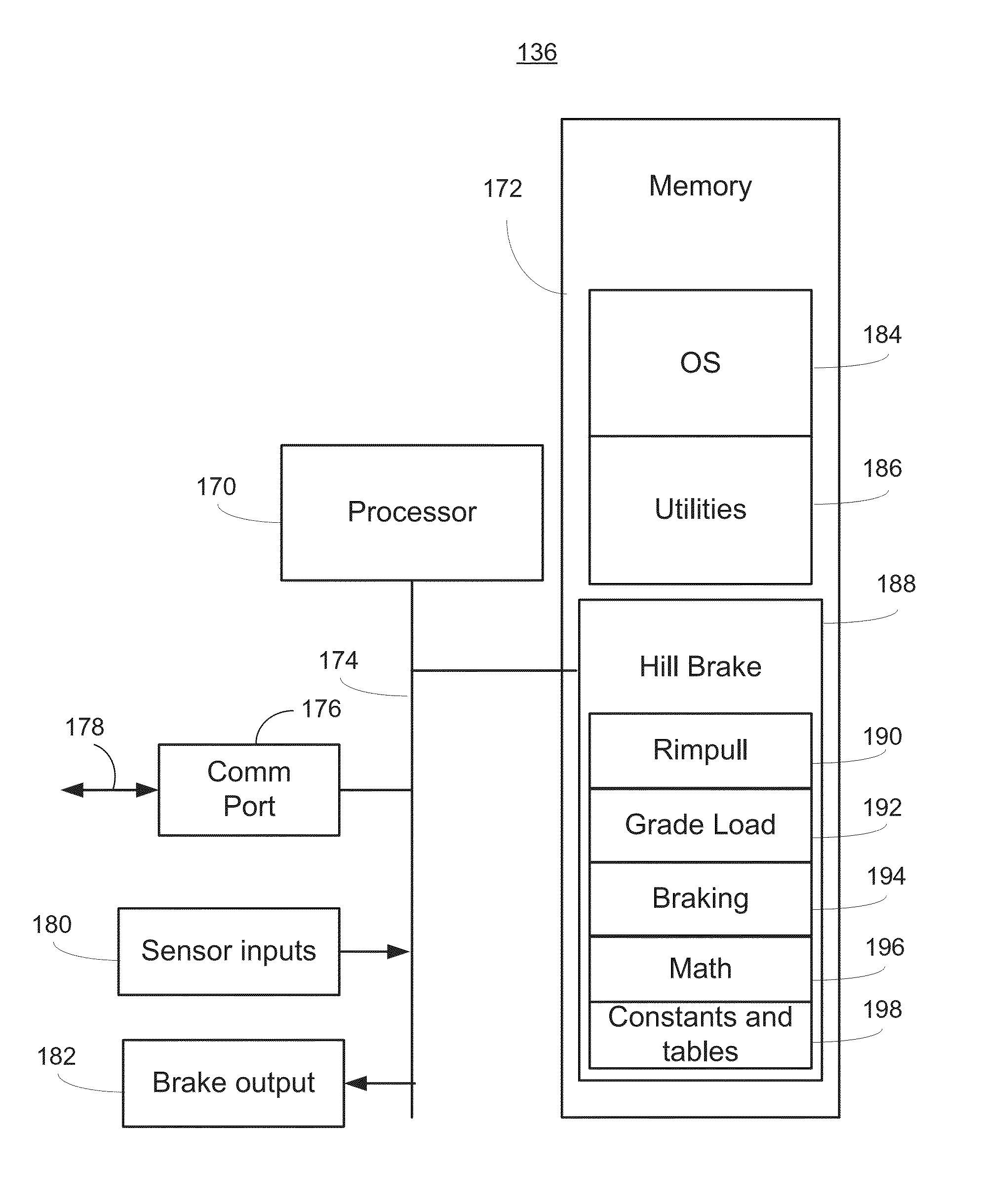Hill Start in a Vehicle
a technology of automatic braking and start-up, which is applied in the direction of braking systems, analogue processes for specific applications, instruments, etc., can solve the problems of undue wear on the brakes, undue wear on the drive train components such as the torque converter, and achieve the effect of reducing the braking for
- Summary
- Abstract
- Description
- Claims
- Application Information
AI Technical Summary
Benefits of technology
Problems solved by technology
Method used
Image
Examples
Embodiment Construction
[0012]FIG. 1 is an illustration of a work site 100 showing a vehicle 102 on an incline 104. The incline 104 may be measured by an angle θ106 from a level reference 108. In the illustration, the vehicle 102 is shown facing uphill, that is so that driving in a forward gear causes uphill motion. When discussing a hill brake, it is equally valid that the vehicle 102 may be facing downhill such that driving in a reverse gear causes uphill motion.
[0013]FIG. 2 is a simplified schematic diagram of the vehicle 102 of FIG. 1 showing components associated with a hill brake system. The vehicle 102 may include an engine 122, coupled to a torque converter 124, whose output drives a transmission 126 and ultimately delivers torque via an axle 128 to drive wheels 130.
[0014]In an embodiment, wheels 132 may be unpowered and may carry a payload bearing element of the vehicle 102. For example, the vehicle 102 may be an articulated truck. In other embodiments, the vehicle 102 may be any of a number of ma...
PUM
 Login to View More
Login to View More Abstract
Description
Claims
Application Information
 Login to View More
Login to View More - R&D
- Intellectual Property
- Life Sciences
- Materials
- Tech Scout
- Unparalleled Data Quality
- Higher Quality Content
- 60% Fewer Hallucinations
Browse by: Latest US Patents, China's latest patents, Technical Efficacy Thesaurus, Application Domain, Technology Topic, Popular Technical Reports.
© 2025 PatSnap. All rights reserved.Legal|Privacy policy|Modern Slavery Act Transparency Statement|Sitemap|About US| Contact US: help@patsnap.com



